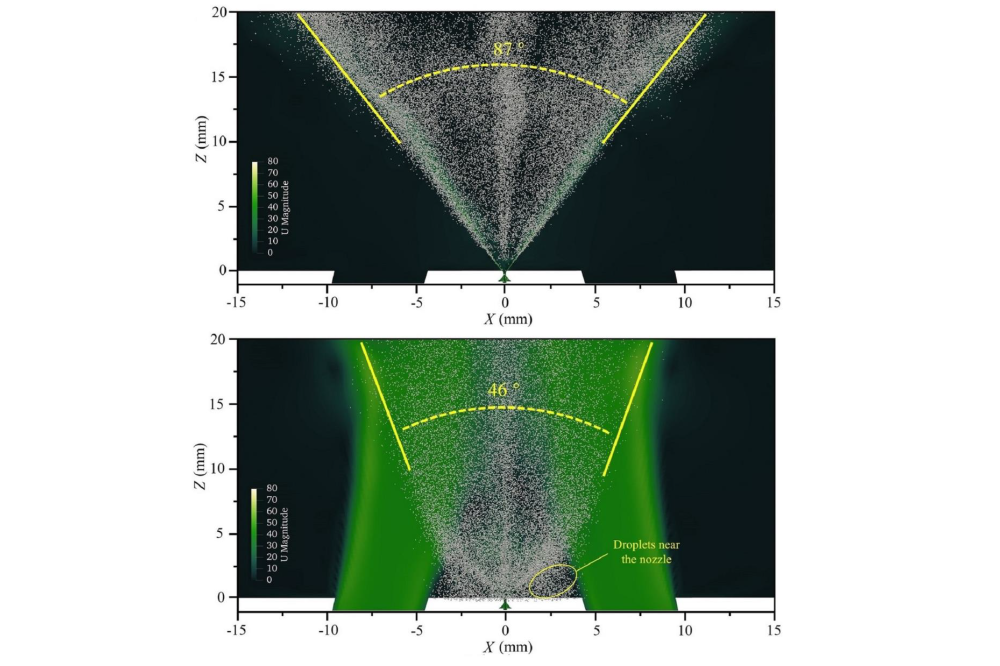Quantification of Turbulent Coflow Effects on Liquid Fuel Atomization from a Pressure Swirl Atomizer
Einleitung
In response to the growing need for sustainable energy solutions and emission reduction, gas turbines offer a viable alternative due to their flexibility and efficiency. Pressure swirl atomizers play a key role in gas turbine combustion by enhancing fuel-air mixing and improving atomization. While extensive experimental research has explored spray characteristics, challenges persist in measuring dense spray regions, necessitating advanced numerical simulations. This study builds on previous work by integrating a seamless VOF-LPT coupling within LES to investigate the impact of co-flow mass flow rate on N-heptane spray atomization. Experimental validation using Phase Doppler Anemometry and shadowgraphy provides reference data. The results offer insights into primary and secondary atomization, spray and spray dispersion under varying co-flow conditions, enhancing the understanding of turbulence-spray interactions and optimizing fuel injection strategies in gas turbines.
Methoden
This study employed a seamless coupling of the Volume of Fluid (VOF) method and the Lagrangian Particle Tracking (LPT) technique within a Large Eddy Simulation (LES) framework using an adaptive mesh. The continuous phase was modeled using an Eulerian approach, treating the liquid and gas as incompressible, immiscible fluids, with turbulence captured through LES. The VOF method was used to track the liquid-gas interface, while the LPT technique described droplet motion as discrete particles influenced by drag and gravity. The transition from Eulerian to Lagrangian representation was based on criteria such as droplet size and sphericity, ensuring an accurate depiction of secondary atomization. The computational domain was designed to replicate experimental conditions, with appropriate boundary conditions applied to capture the spray behavior comprehensively.
Ergebnisse
The instantaneous velocity contours and spray patterns (see Figure 1) demonstrated that co-flow significantly influenced liquid fuel atomization. Without co-flow, the spray exhibited wide dispersion with a central recirculation zone due to the swirling motion of the liquid sheet. Increasing the co-flow mass flow rate confined the spray, expanded the negative velocity region, and intensified external recirculation while stabilizing the velocity profile inside the spray. The primary breakup remained largely unchanged, with vibrational breakup dominating. Co-flow also affected secondary atomization, completing the process before Z=4 mm. Droplet size distributions followed a "U"-shaped pattern, with co-flow primarily influencing larger droplets downstream, aligning with the Rosin–Rammler distribution.
Diskussion
The spray behavior and velocity distributions are influenced by the co-flow, which compresses the gas within the liquid sheet and intensifies the negative velocity region. Recirculation zones alter airflow, affecting droplet dispersion and mixing, while increasing shear force reduces liquid sheet thickness and impacts primary breakup. The inward compression of the spray restricts droplet dispersion, with smaller droplets forming near the nozzle. We-Oh analysis confirmed vibrational breakup as dominant, and the model's overprediction of velocity and SMD suggests the need for refinement. Despite this, the droplet size distribution aligns with the Rosin–Rammler model.




